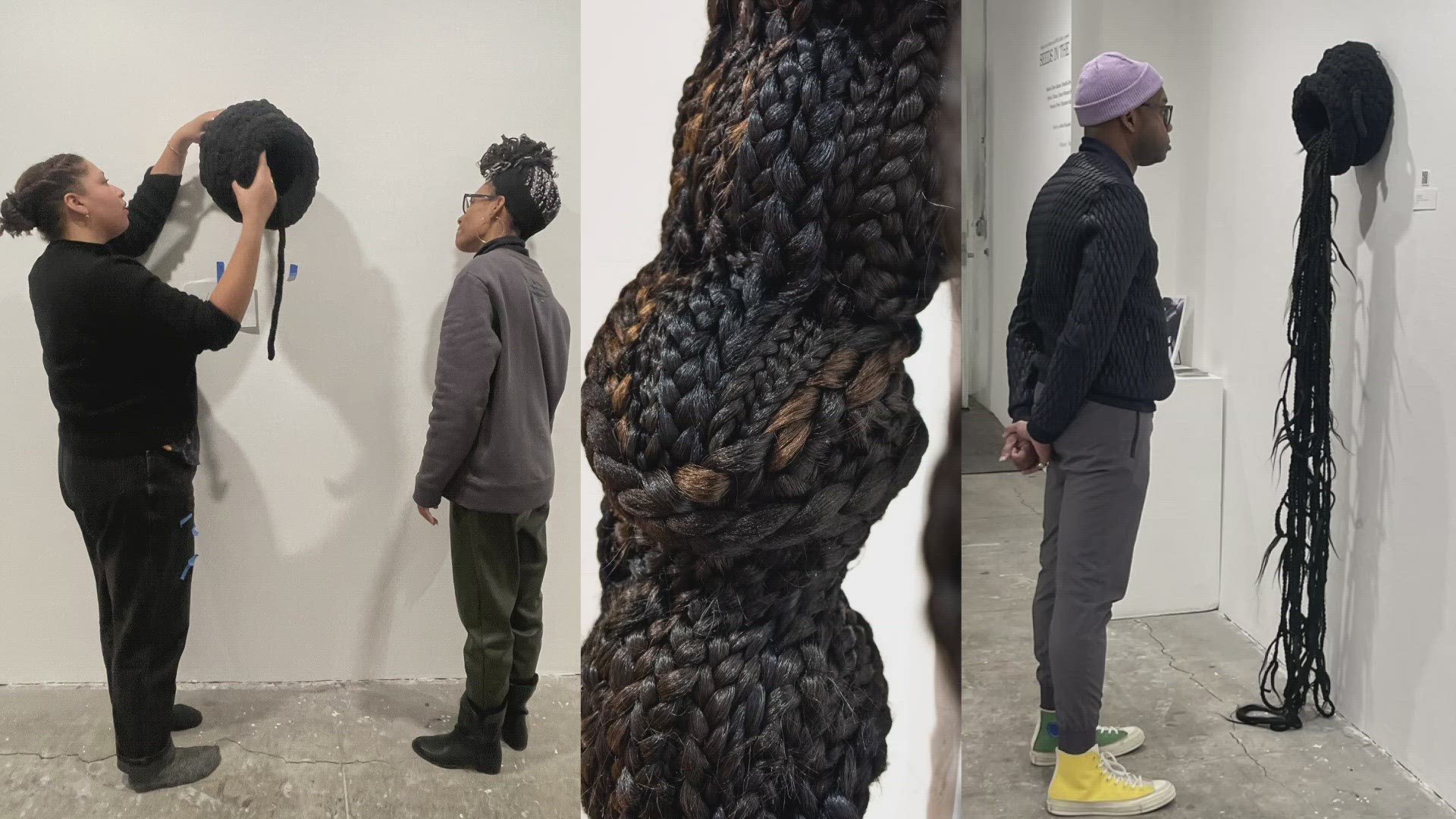PORTLAND, Maine — During Black History Month, Portland's global arts incubator Indigo Arts Alliance and Seattle's SOIL Gallery have partnered to showcase "Seeds in the SOIL."
The exhibition features the work of nine black artists who live in Maine or used to live in Maine, and who were part of the David C. Drickell Fellowship at Black Seed Studio in Portland.
On Thursday, Feb. 22 the three artists participating in the exhibition will hold a virtual Zoom talk about their works and efforts. The program entitled “Voices & Visions: An Artist Conversation,” happening from 7:00 p.m. - 8:30 p.m. Click the link here to register.
The show is curated by Ashley Page and Jordia Benjamin from the Indigo Arts Alliance, which is an innovative black-led arts incubator in Portland dedicated to the professional development and amplification of black & brown artists throughout the African diaspora.
“As advocates of diversity and unity,” Page said. “This exhibition not only shines a spotlight on the accomplishments of our residency fellows but also ignites a cultural interchange between Portland, Maine, and the creative community in Seattle.”
“Through this exhibition and the "Voices & Visions" talk, we aspire to bridge the geographic gap, nurturing a dialogue that enhances our shared artistic narratives," Benjamin added.
“Seeds in the SOIL” will feature the work of Rachel Gloria Adams, Rosalba Breazeale, Heather Flor Cron, Brian J. Evans, Hector Nevarez Magaña, Raquel P Miller, Veronica Perez, and Benjamin Spalding, and Kevin Xiques.
This exhibit is the first collaboration exhibition of its kind that features diverse work including, paintings, photography, fiber installation, performance, and video work from all nine fellowship participants.
Brian J. Evans is one of the participating citizen artists who is also an assistant dance professor at Bates College. He said his different forms of expression and art are a depiction of his life experiences, both positive and negative.
The piece on display is called "Crazy" and it's a video of him running in place for 10 minutes with what he said has a deep message.
"Essentially I ask the audience to help me get through this experience because it's really challenging and difficult, and it's a commentary on how crazy it is sometimes to be running through all of these different identities presumably not getting anywhere," Evans said.
Evans said he has done the same live depiction in different places and the reaction from people has been different everywhere.
"A commentary on that spectrum of like what happens when you are working so hard to get wherever it is that you are going, and you feel like you can't and the difference it makes when you have a community or when you have a community that either can't or won't or will only support parts of you," Evans elaborated.
Veronica Perez is also a participating artist and is the administrative assistant at Indigo Arts Alliance. She holds braiding circles with people for them to have conversations over the act of braiding hair — hair that she later uses as part of her hair and textile displays.
"I merge the two together, to really, not only talk about my personal history as an artist but also talk about the personal histories of the people in my community and the people that surround me," Perez said.
She said her hair displays all come with personal stories.
"Black History is important to remember not only the times when black and brown people have been pushed away and pushed down but also show the resiliency of being like yeah we are not just going to be these seeds in the soil that are not growing, we are going to blossom, and we are going to drop more seeds and we are going to drop more knowledge," Perez said.
"But I think in general the intentionality piece is the most important thing, and to strike up conversations that you wouldn't normally have," Evans added.
Here are more examples of Evans' digital works.
For more information about the SOIL Gallery, please visit https://soilart.org/.

